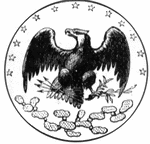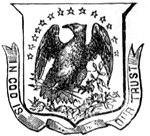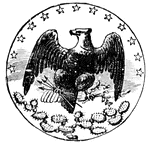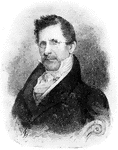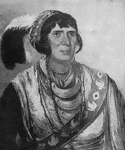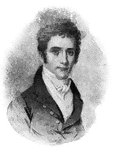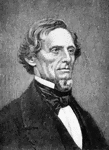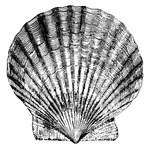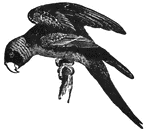
Parakeet
Parakeets can be found in the wild in Florida. They are members of the parrot family. They have a soft,…
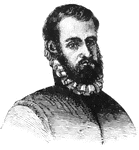
Don Pedro Menendez de Aviles
Don Pedro Menendez de Aviles sailed to Florida to conquer and colonize.
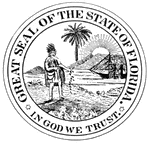
Florida Seal
The former Great Seal of Florida, featuring an indian, palm tree, the sun, and some uncharacteristic…
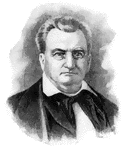
John Milton
(1807-1865) Portrait of Florida Governor John Milton. As a Democratic governor, Milton encouraged the…
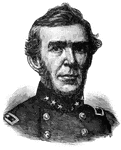
General Bragg
Portrait of General Bragg. General Bragg was in command at Pensacola, with a force of 7,000 men from…

William D. Bloxham
(1835-1911) Picture of Governor William D. Bloxham during 1879. Bloxham served as Florida's thirteenth…
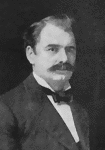
William Sherman Jennings
(1863-1920) In 1901, Governor William Sherman Jennings of Brooksvillie was Florida's eighteenth governor…
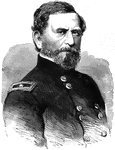
J. T. Sprague
"General J. T. Sprague, born in Newburyport, Mass., July 3rd, 1810, died in New York city, September…
!["General Lorenzo Thomas, born in Newcastle, Del., October 26th, 1804, died in Washington, D. C., March 2nd, 1875, was graduated from the United States Military Academy in 1823; served in the Florida and Mexican Wars, and received the brevet of lieutenant colonel for gallantry at Monterey. On the 7th of May, 1861, he was brevetted brigadier general, and made adjutant general of the army on August 3rd, with the full rank of brigadier general. He served until 1863, when he was intrusted for two years with the organization of [African American] troops in the Southern States. He was brevetted major general, United States Army, on March 13th, 1865. He was retired in 1869." — Frank Leslie, 1896](https://etc.usf.edu/clipart/11000/11059/thomas_11059_mth.gif)
Lorenzo Thomas
"General Lorenzo Thomas, born in Newcastle, Del., October 26th, 1804, died in Washington, D. C., March…
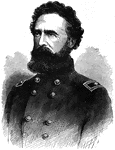
George Sykes
"General George Sykes, born in Dover, Del., October 9th, 1822, died in Brownsville, Texas, February…
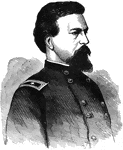
General Alexander S. Webb
"General Webb, born in New York city, February 15th, 1835, was graduated from the United States Military…

New Fernandina
"Federal troops marching through Second Street, New Fernandina, Fla. Our sketch of New Fernandina in…
Bluefish
"Bluefish are sold whole, their average weight from 3 to 6 pounds. Snaper blues or oung fish, weigh…

Sea Bass
"Sea bass has a white, flaky flesh, and weighs from 1 to 3 pounds. This fish responds to any cooking…

Striped Bass
"Striped bass is a soft-fleshed fish, sometimes called rockfish, averaging 2 to 5 pounds in weight.…
Kingfish
"King mackeral is also called kingfish. It is distinguished from other mackeral by weught, by its bluer…

Mullet
"Mullet, known as Florida's "money fish" are caught in large quantities in Florida, particularly along…

Pompano
"Pompano is considered Florida's "Fish de luxe" and commands the highest price. The fish is delicate…

Red Snapper
"The Florida or Pensacola red snapper is it is commercially known, because that city is headquarters…

Blue Crab
"Several species of crabs are taken from Florida coastal waters, probably the most common being the…
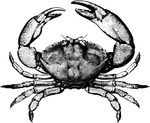
Stone Crab
"Stone crabs are popular with Floridians and Florida visitors, and are featured on restaurant and hotel…

Crawfish
"Also known as Florida lobster. This Southern species, a "spiny" lobster, found off the southern Florida…
Fort Clinch
"Exterior view of Fort Clinch, on Amelia Island, Fla., commanding the Harbor of Fernandina, captured…
Fort Clinch
"Interior view of Fort Clinch, on Amelia Island, Fla., commanding the Harbor of Fernandina, captured…
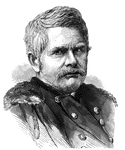
General Edward O. C. Ord
"General Ord, born in Cumberland, Md., October 18th, 1818, died in Havana, Cuba, July 22nd, 1883, was…

Battle of Stone River
"Battle of Stone River, Tenn. Decisive charge and capture of Byrne's Confederate battery by the Seventy-eighth…
Fort Taylor
"Fort Taylor, Key West, Fla. Key West, the most western of the Pine Islands, is about sixty miles southwest…
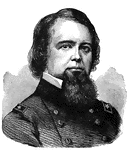
General John Pope
"General Pope, born in Louisville, Ky., March 16th, 1822, was graduated from the United States Military…

Che-Kiang
"The Banks Expedition- a Confederate Schooner running into the United States transport Che-Kiang,…



